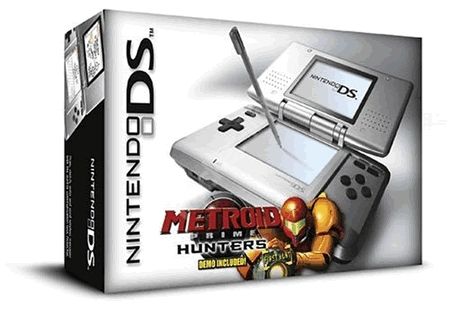With the UK release of the Sony PSP delayed until September, Nintendo have the summer to assert their authority on the handheld market with the new DS console.
Our quick take
The PSP has Portable Media Player aspirations, but the DS can too. Custom plug-ins are already available. The market in the Far East is already flooded with flash readers, flash cards and plug-ins to utilise the Advance cart slot, turning your DS into an MP3, MP4 and movie player. There are also card readers available to save a DS game to a flash memory card, no doubt unpopular with Nintendo. Turning your DS into an MP3 player may seem impractical, but switch the sound options to Surround Sound and you may have a change of heart- the sound on Super Mario 64 DS is incredible- right down to the birds tweeting in the background.

Nintendo DS handheld games console - 4.0 / 5
| FOR | AGAINST |
|---|---|
|
|
Reports from the Nintendo camp suggest they are well on the way to their target of 6 million units shipped by March 2006, but is the DS going to suffer at the hands of the competition as the Cube did against the more powerful Xbox and the more adult orientated PS2?
The construction of the DS looks a little suspect, but it's as robust as the Advance SP. In some ways, the PSP feels so precious to hold, and the open style leaves the screen more open to damage. It certainly feels heavier and the eject mechanism is more susceptible to breakage than the simple slots on the DS.
While it may not have the sleek feel of the PSP, it is very comfortable to use and more durable than one might think. We have had our sticky paws over both consoles and having witnessed a marketing assault at the new Star Wars movie, I gave six of the latest games a battering across 10 different DS units. Even with Joe public greedily clawing and dabbing at them, they were all functioning well, although the touch screens were a little greasy.
The retro feel of the DS is coupled by some forward thinking, both in the games, and in the console's design. The stylus, unusual to say the least, is more intuitive than one might think. The DS features two cartridge slots- one for the small DS games, the other for the larger Advance/Advance SP games. You choose which cart to read from at the start-up screen, which has a calendar, birthday recall, clock and access to the PictoChat and DS software download applications. The PSP pips the DS in the graphical stakes, partly due to the size of the screen, the power of the console, and the delivery, via Sony's proprietary disc. The DS does well in taking the games of the successful N64 (which gave the PS1 more of a run for its money than the Cube did the PS2) and adding the ability to display graphics in 3D via a new engine. Thus, the DS is the Advance SP, but with 3D elements. Nintendo bring all this, plus touch screen, local Wi-Fi multi-player gaming and sub-£30 games for just £120 more than the SP cost at launch- impressive.
To recap
A good handheld that just falls short of the Sony PSP dream
